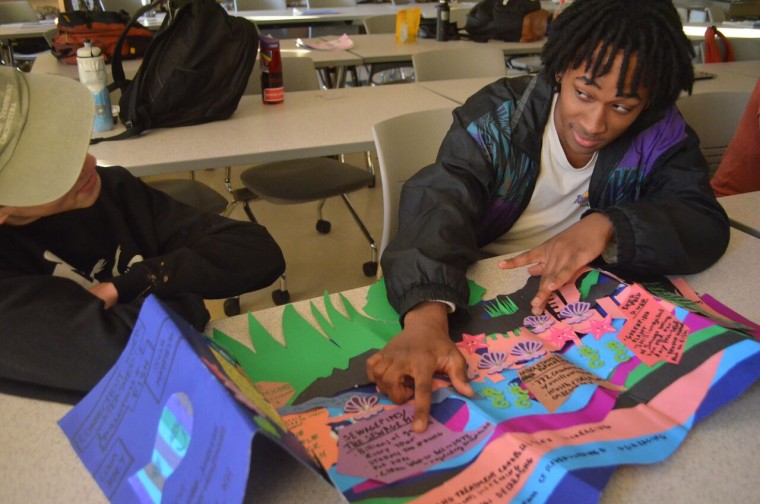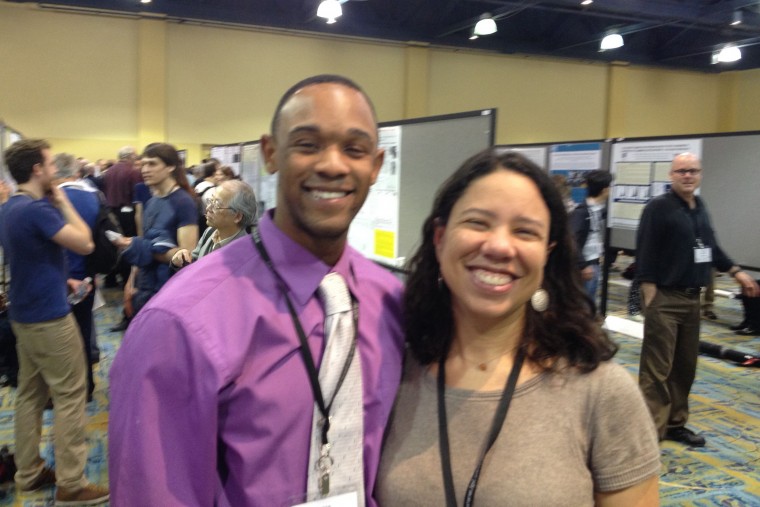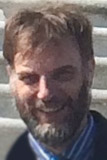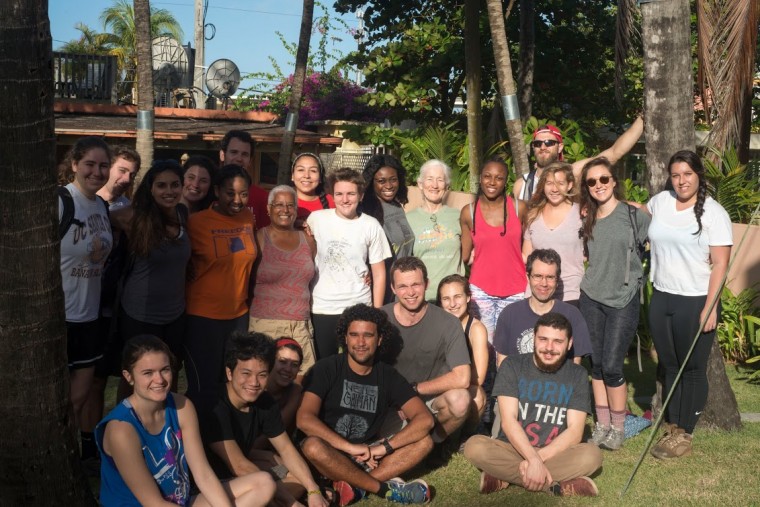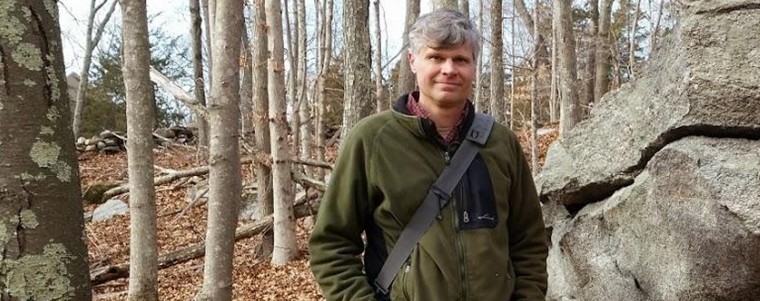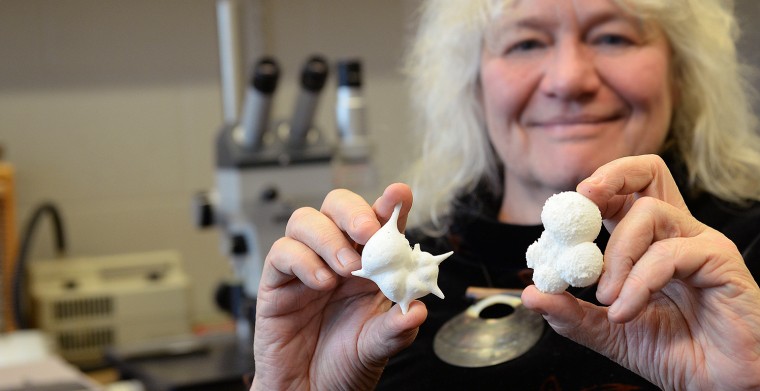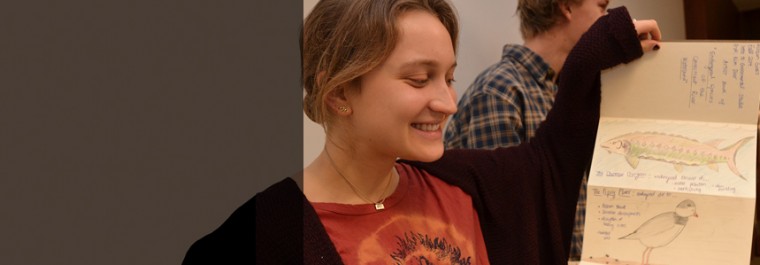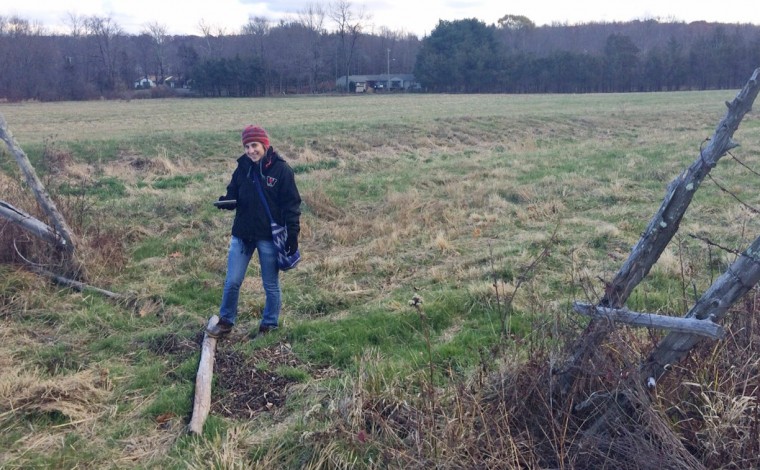In its most recent meeting, the Board of Trustees conferred tenure on Hari Krishnan, associate professor of dance. He joins seven other faculty members who were awarded tenure earlier this spring. In addition, seven faculty members were promoted to Full Professor: Mary Alice Haddad, professor of government; Scott Higgins, professor of film studies; Tsampikos Kottos, professor of physics; Edward Moran, professor of astronomy; Dana Royer, professor of earth and environmental sciences; Mary-Jane Rubenstein, professor of religion; and Gina Athena Ulysse, professor of anthropology. Brief descriptions of their research and teaching appear below. Associate Professor Krishnan teaches studio- and lecture-based dance courses on Mobilizing Dance: Cinema, the Body, and Culture…
Students enrolled in the Introduction to Environmental Studies course presented their artist's books, children's stories, documentaries and story maps during the class's annual Project Showcase on May 14 in Exley Science Center. The class is taught by Kim Diver, visiting assistant professor of earth and environmental sciences. Suzy Taraba, director of Wesleyan's Special Collections and Archives attended the event and spoke to the students about artist books. Photos of the event are below: (Photos by Aviva Hirsch) (more…)
Ellen Thomas, research professor of earth and environmental sciences, is the co-author of four recenty-published papers. They include: "Deep-sea benthic foraminiferal turnover during the early middle Eocene transition at Walvis Ridge (SE Atlantic)," published in Palaeogeography, Palaeoclimatology, Palaeoecology, Issue 417: pages 126-136, January 2015. The paper's co-author, Silvia Ortiz, was a PhD student at the University of Zaragoza, and spent several months at Wesleyan working with Thomas. (more…)
Students, faculty and alumni involved in planetary science attended the 46th Lunar and Planetary Science Conference March 16-20 in Houston, Texas. Jim Greenwood, assistant professor earth and environmental sciences, gave a talk titled "urCl-KREEP? Cl-rich glasses in KREEP basalts 15382 and 15386 and their implications for lunar geochemistry." Martha Gilmore, chair and professor of earth and environmental sciences and the George I. Seney Professor of Geology, met with the Venus Exploration Analysis Group as a member of its Executive Committee. Jack Singer '15 and Lisa Korn MA '15 presented posters. Several Wesleyan alumni also made presentations at the conference including James Dottin ’13 (E&ES), now a PhD…
Johan "Joop" Varekamp, the Harold T. Stearns Professor of Earth Science, professor of earth and environmental sciences, was elected to be chair of the Geology and Public Policy Committee (GPPC) of the Geological Society of America (GSA). The group prepares position statements for GSA (e.g., on fracking, climate change). Varekamp has already made six congressional visits in March, visiting the offices of Senators Richard Blumenthal, Elizabeth Warren, Ed Markey and Representative Rosa DeLauro. He does similar work as chairman of the board of the Connecticut Fund for the Environment / Save the Sound. Varekamp also was elected to be the chair of the LimnoGeology (‘lakes’) division…
Phil Resor, associate professor of earth and environmental sciences, and Gus Seixas '10 are co-authors of "Constraints on the evolution of vertical deformation and Colorado River incision near eastern Lake Mead, Arizona, provided by quantitative structural mapping of the Hualapai Limestone," published in the February 2015 issue of Geosphere, Vol. 11, pages 31-49. The paper includes research from Seixas's honors thesis at Wesleyan. In this study, the authors quantify the structural geometry of Hualapai Limestone, which was deposited in a series of basins that lie in the path of the Colorado River. The limestone was deformed by by a fault pair…
This semester, 21 senior earth and environmental science majors in the Senior Field Research Project (EES 398) course traveled to Puerto Rico to develop their research, data collection, analytical and presentation skills. As part of the EES Department's capstone course sequence, students are required to participate in a series of student-designed research projects. From Jan. 12-19, students performed independent research in the field. "The overarching spirit is to have students participate in the full arc of a research project: from the design all the way to the presentation of the results," said Dana Royer, associate professor of earth and environmental sciences, associate professor…
Phillip Resor, associate professor of earth and environmental sciences, was recently interviewed on WNPR about an amazing part of Connecticut's geological history. According to the story, several hundred million years ago, Connecticut was in the middle of a massive continental collision, which formed the super continent Pangea and pushed up huge mountains. Deep beneath the earth, a borderland beneath the two continents formed. Today, geologists call it the Lake Char fault system; it runs along the I-395 corridor in southeastern Connecticut. Resor took WNPR reporter Patrick Skahill to East Haddam by Gillette Castle to walk along the banks of the Connecticut River, and showed him fine black…
#THISISWHY Research Professor Ellen Thomas grasps a glass-enclosed sample of hundreds of microfossils, each a white fleck of limestone barely visible to the human eye. "The first time students look at these they say, 'they all look the same to me,' but in reality, they are all have very different shapes," Thomas says. "Even under a microscope, it can be difficult for a new eye to see the differences, but each species has its own shape; some have a much more open, light structure because they lived floating in the oceans close to the surface. Others have denser shells and lived on the bottom of the ocean,…
Martha Gilmore, the George I. Seney Professor of Geology, and her former graduate student Patrick Harner MA ’13 are the co-authors of a paper titled "Visible–near infrared spectra of hydrous carbonates, with implications for the detection of carbonates in hyperspectral data of Mars," published in Icarus, Vol. 250, pages 204-214, April 2015. The paper suggests that hydrous carbonate minerals might be relevant on Mars. "We bought and made these unusual minerals in my lab and then took spectra of them to simulate what Mars orbiters might see. Carbonate minerals form in water on Earth (e.g., limestones), and are predicted for Mars, but…
Students from Introduction to Environmental Studies (E&ES 197) presented their final projects Dec. 11 in Exley Science Center. The Project Showcase involved 80 students informally presenting artists books, GIS story maps, children's stories, fictional journals and other creative explorations. “All projects are related to environmental issues in the Connecticut River,” said course instructor Kim Diver, visiting assistant professor of earth and environmental sciences. The project is associated with the Center for the Arts' Feet to the Fire initiative. Several Wesleyan scholars and staff volunteered their time to demonstrate artist books to the students including Kate TenEyck, art studio technician and visiting assistant professor of art;…
Five groups of students enrolled in the Geographical Information Systems (GIS) Service Learning Laboratory course E&ES 324 presented their semester-long research Dec. 1 in Exley Science Center. Fellow students, faculty, staff, community members and community partners attended the presentations.


